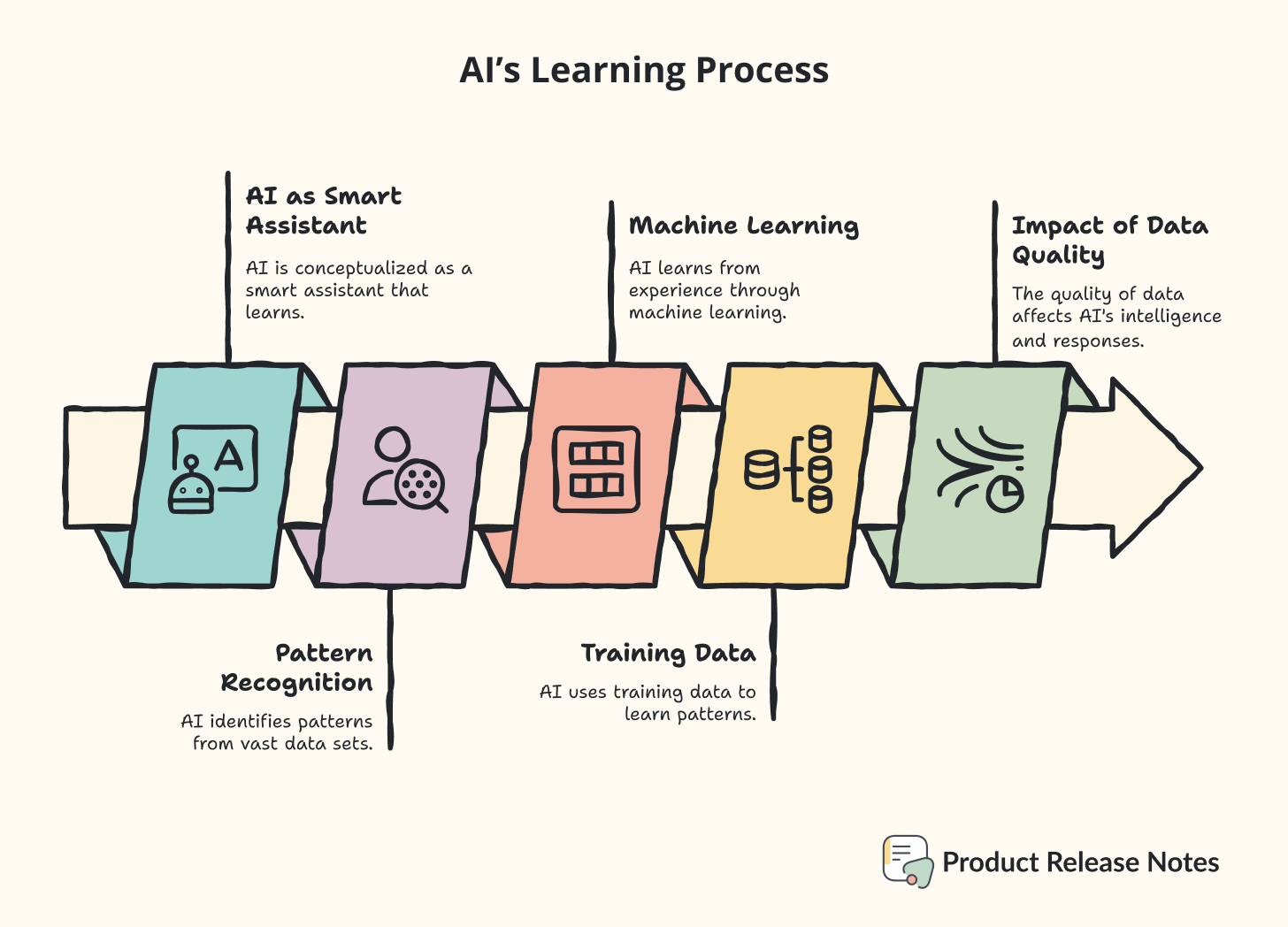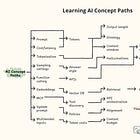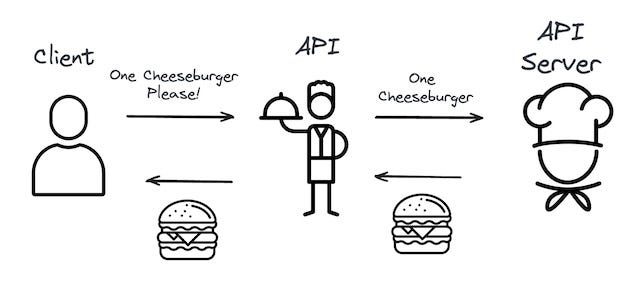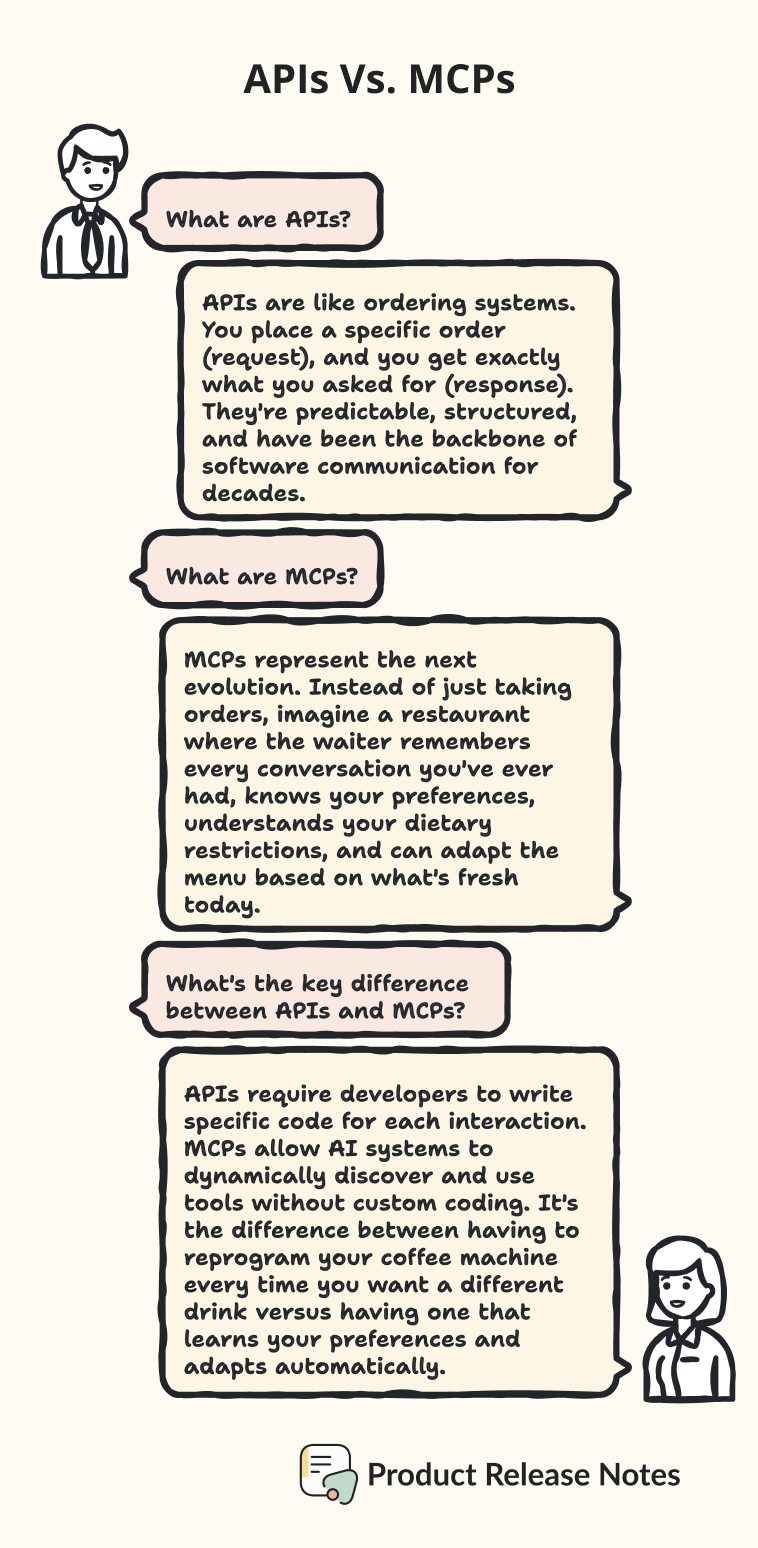The Easiest Introduction to AI Concepts For Non-Technical People
The gap between technical and non-technical people in AI is widening. This comprehensive glossary and visualization guide bridges that gap, helping anyone understand the building blocks of AI.
👩🎓👨🎓 Students often don't have access to professional advice for free, this 100% funded scholarship is for you!
Walk into any tech meetup, scroll through your LinkedIn or Substack feed, or attend a product meeting where AI is discussed, and you'll quickly get the feeling that everyone is speaking a foreign language. MCP, tokens, prompts, APIs, neural networks... Even the smartest professionals feel left out of the conversation! 😖
The AI field has exploded with technical terminology that creates barriers for broader understanding. Terms like "Model Context Protocol," "API endpoints," "tokenization," and "prompt engineering" sound intimidating to those without technical backgrounds. But here's what matters: you don't need a computer science degree to understand these concepts.
In this post we will make the match of some of this concepts so you can start practicing the jargon and connecting the dots. 😉
The Foundation: Understanding AI's Building Blocks
Let's establish the mental models that make everything else click into place.
Think of AI as a Smart Assistant That Learns
Artificial Intelligence isn't magic, it's pattern recognition on vitamins. Picture the smartest person you know, but instead of reading a few hundred books in their lifetime, they've absorbed millions of documents, images, and conversations. That's essentially what AI systems do.
The key insight most people miss is that AI doesn't truly "understand" anything the way humans do. It's incredibly sophisticated pattern matching. When ChatGPT writes you a marketing email, it's not thinking about your business goals, it's recognizing patterns from millions of similar requests and generating text that statistically resembles what would be appropriate.
The Learning Process: From Clueless to Capable
Machine Learning is exactly what it sounds like, machines learning from experience. But here's the better analogy: imagine teaching someone to recognize dog breeds by showing them thousands of photos. Eventually, they'd get really good at spotting Golden Retrievers versus German Shepherds.
That's training data, the massive collection of examples AI systems study to learn patterns. The quality of this data directly impacts how smart the AI becomes. Feed it biased or incomplete information, and you get biased or incomplete results.
The Essential Vocabulary For Product People
That's why I've created a comprehensive list of terms you can show off in your next brainstorming session for your upcoming AI development. 😉
Want to contribute to this list with your own publication? Just send me a message.
Tokens: The Currency of AI Communication
A token is roughly equivalent to a word or part of a word that AI processes. Think of tokens as the basic units of AI communication, like individual Lego blocks that get assembled into sentences.
Why this matters? Most AI tools have token limits, which means there's a maximum amount of text they can handle at once. It's like having a conversation where you can only use a certain number of words before the other person forgets what you talked about earlier.
Real-world impact: When ChatGPT seems to "forget" the beginning of a long conversation, it's hit its token limit. Understanding this helps you structure your requests better.
Prompts: The Art of AI Communication
A prompt is simply your instruction or question to an AI system. But calling it "simple" undersells how important good prompting has become. It's like the difference between asking someone "help me" versus "help me write a professional email declining a meeting request while maintaining a positive relationship."
The structure that works best:
Context: Background information the AI needs
Instruction: What you want it to do
Input: Specific data to work with
Output: How you want the results formatted
Prompt Engineering has emerged as a critical skill for everyone, the practice of crafting requests that get better AI responses. It's become so important that companies are hiring prompt engineers at six-figure salaries!
Here’s how it’s also changing the salaries in product management:
APIs vs MCPs: The Evolution of Digital Communication
Image from SeattleDataGuy.
Here's where things get interesting, and where the typical restaurant analogy breaks down:
APIs (Application Programming Interfaces) are like ordering systems. You place a specific order (request), and you get exactly what you asked for (response). They're predictable, structured, and have been the backbone of software communication for decades.
MCPs (Model Context Protocols) represent the next evolution. Instead of just taking orders, imagine a restaurant where the waiter remembers every conversation you've ever had, knows your preferences, understands your dietary restrictions, and can adapt the menu based on what's fresh today.
The key difference: APIs require developers to write specific code for each interaction. MCPs allow AI systems to dynamically discover and use tools without custom coding. It's the difference between having to reprogram your coffee machine every time you want a different drink versus having one that learns your preferences and adapts automatically.
Neural Networks: The Brain-Inspired Architecture
Neural Networks attempt to mimic how human brains process information. Imagine a web of decision-makers, each handling a small part of a problem, all working together to reach conclusions.
Deep Learning takes this further by adding many layers of these decision-makers, allowing for more complex pattern recognition. This is what enables AI to recognize faces in photos, translate languages, and generate human-like text.
The practical implication: The "deeper" the network (more layers), the more sophisticated the AI's capabilities, but also the more computing power required. 🔥
The Ecosystem: How Everything Connects
Understanding individual terms is helpful, but the real breakthrough comes when you see how they all work together.
The AI Communication Flow
You write a prompt (your instruction or question)
The AI breaks it into tokens (processable units)
Neural networks analyze patterns in your request
The system draws from its training data to generate a response
APIs or MCPs facilitate any external tool usage needed
The result gets converted back into human-readable text
Context Windows: The Memory Limitation
Context Window refers to how much information an AI can consider at once. Imagine having a conversation where you can only remember the last 10 minutes of what was said. That's essentially what happens with AI systems.
Modern AI systems are dramatically expanding these windows, some can now "remember" entire books' worth of information in a single conversation. This expansion is enabling entirely new applications and capabilities.
Practical Applications Where This Knowledge Pays Off
In Business Meetings
When someone mentions "RAG implementation," you'll know they're talking about Retrieval-Augmented Generation, a technique that lets AI access specific company documents or databases to provide more accurate, current information.
In Product Discussions
Understanding hallucination (when AI generates plausible-sounding but incorrect information) helps you ask the right questions about AI implementation risks and quality control measures.
In Strategic Planning
Knowing the difference between narrow AI (designed for specific tasks) and artificial general intelligence (theoretical AI that matches human cognitive abilities) helps frame realistic expectations about what AI can and cannot do today.
The Future of AI Communication
The landscape of AI terminology continues evolving rapidly. Multimodal AI (systems that process text, images, and audio together) is becoming standard. Agent workflows (AI systems that can use multiple tools to complete complex tasks) are reshaping how we think about automation.
Your Next Steps
Start using these terms in context, ask clarifying questions, and remember that everyone in the AI space is still learning.
The real power of understanding AI terminology isn't just keeping up with conversations, it's being able to contribute to them. When you understand the building blocks, you can ask the right questions, identify opportunities, and spot potential issues before they become problems.
The AI revolution isn't happening to us; it's happening with us. And now you have the vocabulary to be part of the conversation. 😉
What terminology questions keep coming up in your work? Drop your thoughts in the comments and let's build this understanding together.










Great article, Elena, and those graphics are on-point!
The one thing that's radically helped my prompting, in addition to everything you share in the AI Prompt Structure, is to always provide an example of what "good" looks like.
It's been a game-changer for every single prompt I use.
Fantastic breakdown! Anyone serious about AI needs this vocabulary; it’s the foundation for making smart, informed decisions.
For more AI trends and practical insights, check out my Substack, where I break down the latest in AI.